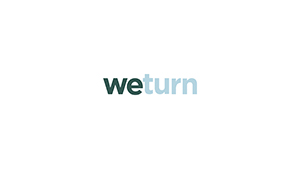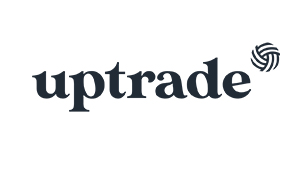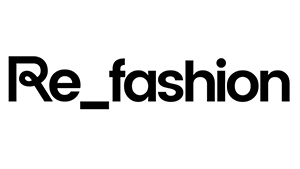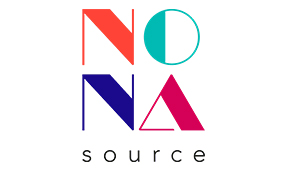Over the last 20 years, worldwide clothes production has more than doubled. Quick turnover of clothing inventories and the shortening of products’ useful lives, which are related to the advent of Fast Fashion, have produced a growing number of unsold items. These often get destroyed in more than questionable ways. Here in France, the AGEC Act, which enters into force in January 2022, prohibits this. We demystify it for you here.
Clothes going to waste, scandals and chaotic management
In 2017, H&M is said to have burned around a dozen tonnes of unsold clothes in Denmark. The label then stated that the garments incinerated fell foul of the company’s safety rules. In 2018, the Burberry annual report put the cost of finished products physically destroyed at 32.6 million euros, of which 21 million euros for off-the-peg clothes and accessories. In that same report, Burberry stated that the incineration process was correlated to conversion into energy (energy production). That same year, Celio puffer jackets, shirts and pullovers were found slashed in the dustbins of the Rouen branch, in the midst of a cold snap. When faced with backlash from associations, Celio stated that the garments were not fit for purpose and that the company also supported the Agency for Donations in Kind (ADN).
Until now, each label has done as it pleased
One of the explanations for this large number of unsold items: labels are caught in a vicious circle. They order large quantities of clothes, since the higher the volume, the more attractive the unit price becomes, particularly in countries where labour comes cheap.
It is then up to labels to manage unsold stock as they see fit: sales, bargain basements, outlets, private sales in store and on specialist sites like Veepee or Showroomprivé. Nonetheless, the Fast Fashion sector generates 25% unsold stock whereas the luxury segment generates around 5%. Anything left over gets incinerated or thrown away, once it has been rendered unuseable, to avoid fuelling a secondary black market.
As for luxury labels, they seldom engage in sales and clearance sales so as not to compromise their image, to safeguard intellectual freedom and prevent the production of fake branded goods. This means that they destroy prototypes and products worth several thousand euros.
Wastefulness up- and downstream
Eliminating unsold stock does not just mean throwing away a finished garment. It also means ruining materials, supplies, workmanship and garments that could have been worn or mended/upcycled/recycled.On top of this wastefulness there’s the environmental cost of needlessly producing a garment, freight transport across thousands of kilometres, warehousing (in heated, well-lit warehouses) and ultimately its destruction. This way, every year, between 10,000 and 20,000 tonnes of textile products get destroyed here in France alone.
The AGEC Act, on the way towards a circular anti-wastefulness model

The AGEC Act (Against Wastefulness and for the Circular Economy), or Act no. 2020-105 of 10 February 2020, was tabled by Brune Poirson, Secretary of State to the Minister for ecological and solidarity-oriented transition (well-known environmentalist Nicolas Hulot) in the second cabinet formed under the then Prime Minister of France, Edouard Philippe. The intention of the Secretary of State was to bring about a sea change in the conduct of corporations to allow France to honour the Paris Agreement, i.e. to get the country on track towards keeping the overall rise in temperature “well below 2 degrees” by 2050.
This Act is aimed at speeding up the change in the production and consumption model to rein in waste and safeguard natural resources, biodiversity and the climate.
In this context comes the ban on destroying unsold new non-food items, from 1 January 2022. For the fashion and luxury industry, this Act means that producers, importers and distributors will henceforth have to “donate, repurpose, re-use or recycle their unsold stock”. It will also have them encourage and help consumers to sort waste, and will have them include recycled or upcycled materials in the production process. Once again, the sea change only comes about when the industry’s hand is forced.
What does the Act say?
Promote production processes that include recycled materials
To move towards lean operations (in terms of resources used) from product design onwards, the Act is set to reinforce the “bonus/penalty” scheme. This mechanism, which already exists for clothing, home linens and footwear, consists of applying a modulation of the eco-contributions paid to eco-organisations by those bringing products to market. It makes it possible to nudge production in the direction of products’ improved sustainability and/or recyclability, and encourages the incorporation of recycled materials in the production process. In practical terms, producers who design or import products in an “eco-friendly” manner (incorporating recycled materials for example) will get a bonus on the financial contribution that they pay to their eco-organisation for the management and end-of-life processing of their products. Conversely, those who fail to toe the line of “high environmental value” products will see their contribution raised by a penalty charge. This information will be displayed to notify consumers at the point of sale.
Ban destruction of unsold stock
Companies currently destroy 5 times as much as they donate. To put an end to this state of affairs, the Act prohibits the destruction (dumping in rubbish dumps and incineration) of new unsold items. It also systematically mandates repurposing (not least through donation), re-use and recycling of new unsold items. The aim is also to combat overproduction. Only certain products will be granted exemption: those which, if recycled, would have a detrimental effect on the environment, lead to a ban (posing a risk to the environment or to human health) or for which there is no technical solution for their repurposing, re-use or recycling.
Collecting used textile items
The aim of the Act is to promote the development of a new lease of life for products and materials, either through repurposing of products in good condition or through recycling of textile products that cannot be repurposed. In this way, Extended Producer Responsibility (EPR) goes beyond the design and sale of products, and bind the producer until such time as the product reaches the end of its useful life. Therefore, it is up to the producer to arrange for collection of the products once they are in a used state and the consumer wants to part with them. A number of distributors already organise the collection of used textile products in their shops. Eco-organisation Eco TLC has them listed as voluntary drop-off points, and they can be pinpointed via geolocation at www.lafibredutri.fr.
Rolling out the Triman pictogram
Moreover, to promote sorting of waste and make it simpler (easier to ascertain which bin a given product needs to go into), there’s the Triman (“Sorting Man”) pictogram. Having entered into force in 2015, it’s not very well known as yet. Henceforth, on textile products, this little man symbol with the three arrows must appear along with explanatory wording indicating to the consumer which drop-off point to use: street collection bins, collection boxes in shops, associations, etc.
Donation promotion
The AGEC Act schedule – for the management of unsold stock – is built around two dates. The first, 1 January 2022, applies to all products already covered by an EPR scheme, i.e. clothes and footwear. The second, 31 December 2023 at the latest, applies to all other products (for example leather goods and accessories for luxury fashion houses). The first principle of the Act is to endorse the ban on destroying unsold stock, whether through dumping in landfill or incineration. Its second principle asks those bringing products to market to look into donation. Then – only once donation has been turned down three times – repurposing or upcycling, and lastly recycling. The last permitted route is that of conversion into energy. Each of the routes looked into allows the finished product or the material from which it is made to live on. The unsold stock – or the materials from which it is made – become a resource which feeds into a looped economy. With this Act, the economy of luxury fashion becomes circular.
What are the solutions for reaching zero waste?
Faced with this swift change, labels are coming up with lots of initiatives
Paring down the offering upstream
In the words of Béa Johnson, figurehead of the zero-waste movement: “The best waste product is one that does not get produced in the first place”. McKinsey, in its report The State of Fashion 2021, states that fashion companies must henceforth go with profitability, simplicity and paring down collections more than discounting and volumes. Luxury groups had already started to work on paring down the offering, with fewer product lines. They are now thinking about cutting down the number of collections.
Among the 500 executive directors of fashion groups quizzed by McKinsey for its 2021 report, 30% said that they were planning to drop the seasonal runway show calendar. Ralph Lauren, Tommy Hilfiger and Marc Jacobs did so in New York in September 2021. Céline and Mugler did so in Paris. Gucci also stated that its collections would henceforth be reduced from five per year to two. Outside of the luxury segment, some labels like skate fashion brand Supreme even went with scarcity as their “trademark”. This is what’s now known as the “drop” model.
Alongside thoughts about the pace of collections, other avenues are being considered. Some labels are developing ventures in terms of making products to order, on a pre-order or special-order basis. But that mainly concerns the high-end segment where customers are prepared to wait.
Putting conversion platforms in place upstream
Right now, we have to put circuits and structures in place that can absorb the influx of this unsold stock, without it ending up on the street markets of certain African cities, as is often the case. Even more so in 2020, when there were particularly large amounts of unsold stock due to the pandemic, and shops remaining closed under lockdown.
Many of the luxury groups have gravitated towards associations offering guarantees as to how products are sold on, like the Agency for Donations in Kind. In addition, they use assistance through work schemes (ESATs) or associations helping people back into employment to anonymise (de-label) products. Some have also upcycled their own unsold stock. One example is LV Upcycling Trainers from Louis Vuitton: trainers pulled apart and reassembled in line with an environmentally-responsible philosophy put in place in 2018 by Virgile Abloh. A bag is expected to follow.
So there are platforms that make it possible to convert materials, remnants and unused rolls of labels’ post-production fabric (Weturn, UpTrade, Nona Source…). Others are being set up for post-production conversion, like Recycle by Refashion, which facilitates access to materials from recycling and development of large-scale industrial solutions for the recycling and conversion of textiles and footwear in Europe.
The AGEC Act compels textile and fashion players to revise their models, in France. Originally settled upon as the transposition of a 2018 EU directive, it in fact went further and even prompted the European Union to rethink its own project. So this plan could present precise targets to be hit by 2030 in terms of the reduction of textile waste, and set new EU standards. Yet the fact remains that the majority of Fast Fashion textile products are produced and destroyed or shipped on outside of Europe…
“Zero Waste is not recycling more, but less” – Béa Johnson












